In recent years, cow ghee has become a global phenomenon, trending as a “superfood” and beloved by followers of the popular Keto diet. But its history — real and legendary — is long.
Cow ghee originated in India, where the heat was not conducive to storing butter for long periods. But when that butter was clarified — heated until the water evaporates and the milk solids separate away — the product had a long shelf life. For thousands of years, cow ghee has been featured in Indian recipes, and even in Hindu mythology, which attributes its origins to the divine. The story goes that Prajapati, lord of the creatures, rubbed his hands together to create the first ghee, which he then poured into flames to create his offspring. As a result, ghee is poured into sacred fires by Hindus to this day, a practice thought to be auspicious for marriages, funerals and other ceremonies.
It was also extensively consumed as part of a balanced diet. Ancient Sanskrit literature describes cow ghee as fit for the gods. Foods cooked in ghee are considered superior to those that eschew it; Vedic cooking divided all food into kacha khana (food not cooked in ghee) and pucca khana (food cooked in ghee). Modern Indian cooking no longer differentiates in this way, but the practice is carried on in religious ceremonies and cooking for festivals such as the Hindu festival called Navratri.
Read our blog – Why The Pure Desi Cow Milk Ghee Is Costlier Than Normal Ghee?
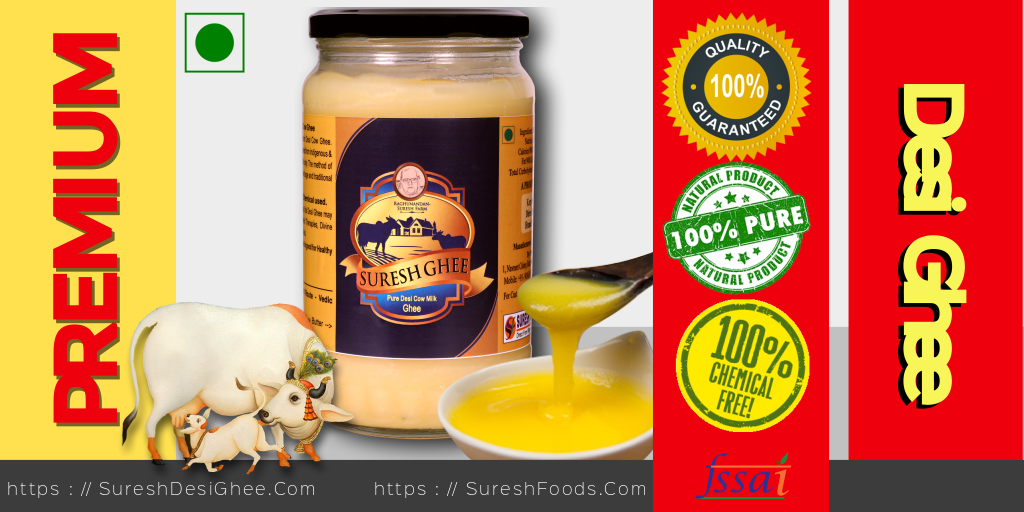
Buy Pure Desi Cow Ghee Online : Order Now. Free Shipping
Read our blog- HEALTH BENEFITS OF DESI COW GHEE THAT MAKE IT A MUST-HAVE IN YOUR KITCHEN
Cow ghee & honey has been advocated and used as dressing for infected wounds by Sushruta (600BC). Ayurvedic literature has been over the centuries, the healing properties of ghee both systemic and topical. Sushruta in his surgical treatise Sushruta Samhita postulated that the combination of desi ghee (ghrita) and honey (madhu) for wound healing would have the synergistic healing effect of each one.
Ghee is useful for wounds, painful ulcers, insect bite wounds, herpes, leprosy, wounds caused by heat or fire and deep wounds by external application as per the classical texts of Ayurveda. Ghee has been found to reduce cholesterol due to the naturally occurring levels of CLA (conjugated linoleic acid). CLA has been shown to help boost the metabolism, increase muscle strength and endurance and decrease body fat. The high concentration of butyric acid found naturally in pure ghee has been shown to boost the immune system and also believed to help fight off cancer cells. Ghee is also rich in antioxidants, Vitamins A, D, E and K.
Read our blog- Benefits of desi cow ghee for weight loss, a teaspoon daily on empty stomach will help you lose weight

Buy Pure Desi Cow Ghee Online : Order Now. Free Shipping

Benefits of Cow Ghee
Good for immunity
Ghee is a good source of energy. It contains medium and short-chain fatty acids, they are directly absorbed in liver “of which, lauric acid is a potent antimicrobial and antifungal substance.”
Prevents chronic diseases
Ghee contains huge amounts of vitamin A that work efficiently in eliminating free radicals from the body. The antioxidant when combined with conjugated linoleic acid (CLA) and butyric acid in ghee becomes a powerful anticancer substance that could help reduce oxidative stress in the body. Furthermore, these two acids also help in preventing many diseases as well.
Protects arteries
Ghee contains K2 vitamin which aid reducing the calcium deposition in the arteries, thus protecting against the calcification of arteries. It helps the heart in functioning well by decreasing harmful blood cholesterol levels and boosting the good blood cholesterol level.
Lubricates the body, externally and internally
Ghee is a well-known treatment in Ayurveda for relieving dryness in the body, as it is oily and moisturizing by nature. Whether taken internally or applied externally, cow ghee has the ability to nourish and lubricate the tissues on a cellular level. This reduces dry skin, dry colon (constipation), inflammation & stiff joints while increasing luster, flexibility and promoting healthy elimination.
Increases the effectiveness of medicinal herbs
Ghee is a well-known catalyst (anupana) and has the unique ability to drive the healing properties of the medicinal herbs deep into the seven body tissues (sapta dhatus). This increases the effectiveness & healing potency of the herbs dispensed.
Supports Diabetic Diet
The ghee consists of natural chemical-free products safe for consumption and goes well with diabetic diets. Pure ghee is like a natural medicine for a diabetic diet. The healthy fatty acids present in the diet help in balancing and maintaining high blood sugar. Ghee on freshly cooked rice is simply easy to digest for diabetics as the low GI index of ghee makes it much easier for diabetic patients to digest and metabolize the sugar. It is stuffed with fats but mainly the fat content consists of the saturated fat category. The fatty acids present in the saturated fat content are effective for improving metabolism, which is a natural way to command control over the blood sugar level of diabetics.
Aids in Digestion
Dairy products consist of a compound called butyrate, which is a kind of short-chain fatty acid. Butyrate is the essential energy source for the cells that line your colon and aids them regenerate. The process is important for health and digestion. Although ghee is not a purely dairy-free product, it turns out as a good option for those who are suffering from lactose intolerance. Ghee contains negligible levels of casein and lactose. According to Research, ghee consists of fat in nature, while lactose consists of carbohydrates in nature. A human body utilizes two entirely separate mechanisms to process both. This is the reason why consuming ghee is better for lactose intolerants. While lactose intolerants can go through difficulty during digesting of other dairy products, ghee aids in improving your digestion better.
Anti-Inflammatory
Ghee contains butyric acid, which is one of the most beneficial short-chain fatty acids (SCFAs) that our body needs. Butyric acid or Butyrate has been shown, in recent research, to actually decrease inflammation in the gastrointestinal tract (GI), and now a recommended dietary addition for some people with ulcerative colitis. Furthermore, cow ghee enemas have long been used in traditional medicine for inflammation of all kinds. Due to the conjugated linolenic acid contained in Ghee, it aids in weight loss (especially belly fat). Being easily digestible, cow ghee helps to develop a faster metabolism.
To make your own, the same way I do at home, here’s how to achieve pure golden, slightly nutty ghee:
- Heat a pound of unsalted organic butter (preferably made from the milk of grass-fed cows) in a heavy-bottomed pot over low heat without stirring. Be patient. Eventually, the butter will begin to simmer and make a slight crackling sound.
- After about 20 minutes, the crackling will stop, and there will be a thin layer of fat on top and heavier solids at the bottom of the pan. Watch the ghee very carefully to make sure that it doesn’t burn. The butter should be a clear golden color on top, with very few air bubbles on the surface. At this point the ghee is done, and you can toss a handful of fresh curry leaves into it if you’d like.
- Turn off the heat and allow it to sit for an hour, then strain it carefully into a clean, dry, airtight container. The sediment at the bottom can be discarded, but the foam on top is okay.
- Store away from light and heat for three months, or refrigerated for up to a year.

Today, ghee is widely available, both online and in stores. Without the milk solids of butter, it can be used for frying & other high-heat cooking. Use cow’s ghee as you would use any fat: Roast vegetables with it; slather it onto meat to baste; fry eggs with it. You can even stir it into your coffee (for that trendy “bulletproof” approach) or your morning porridge. Refrigerate your ghee if you like, but it’s not a requirement and will keep at room temperature; it will solidify in the fridge but melt at room temperature or when heated.

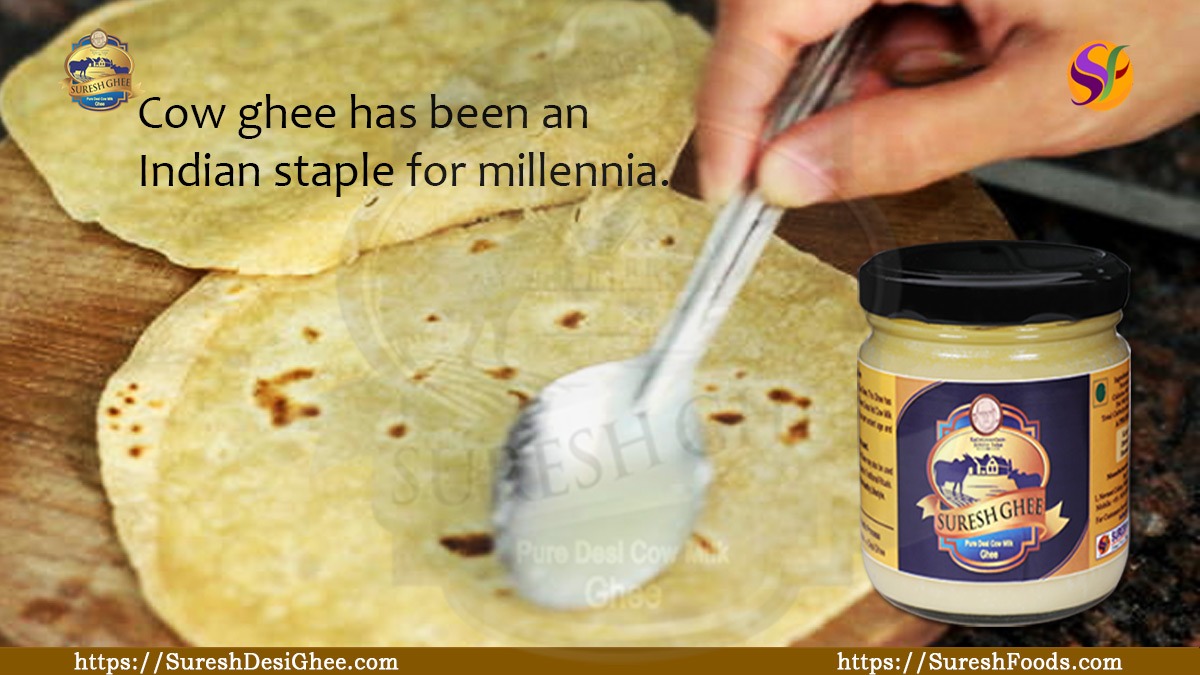
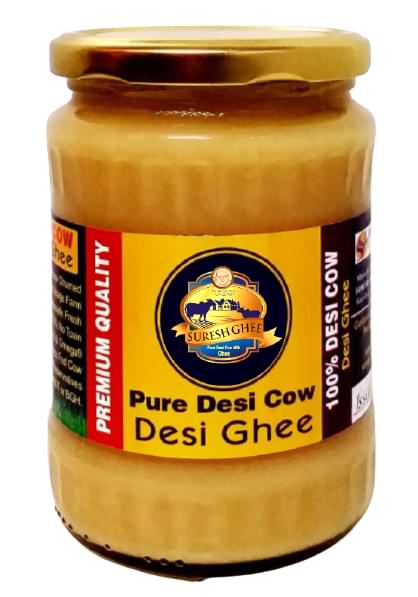
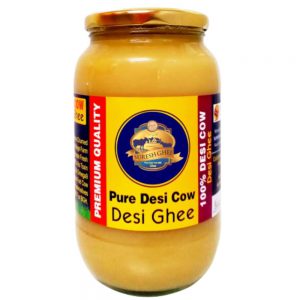
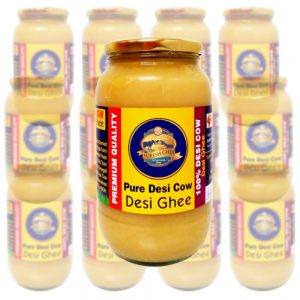
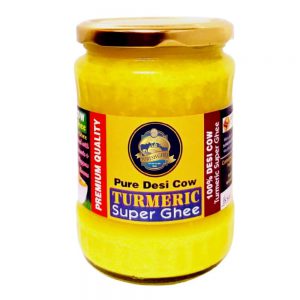
 WhatsApp us
WhatsApp us 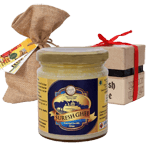
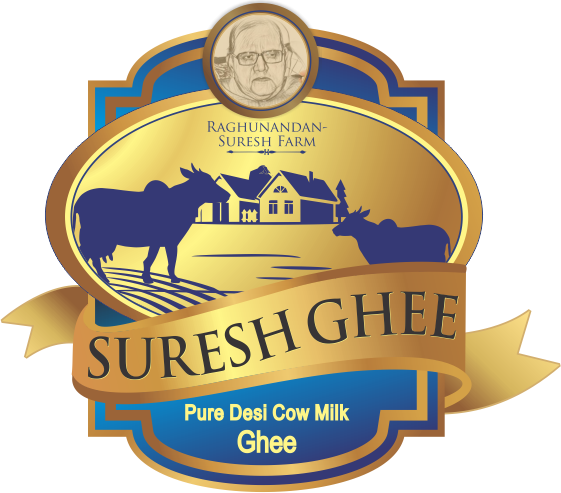
Naveen m...